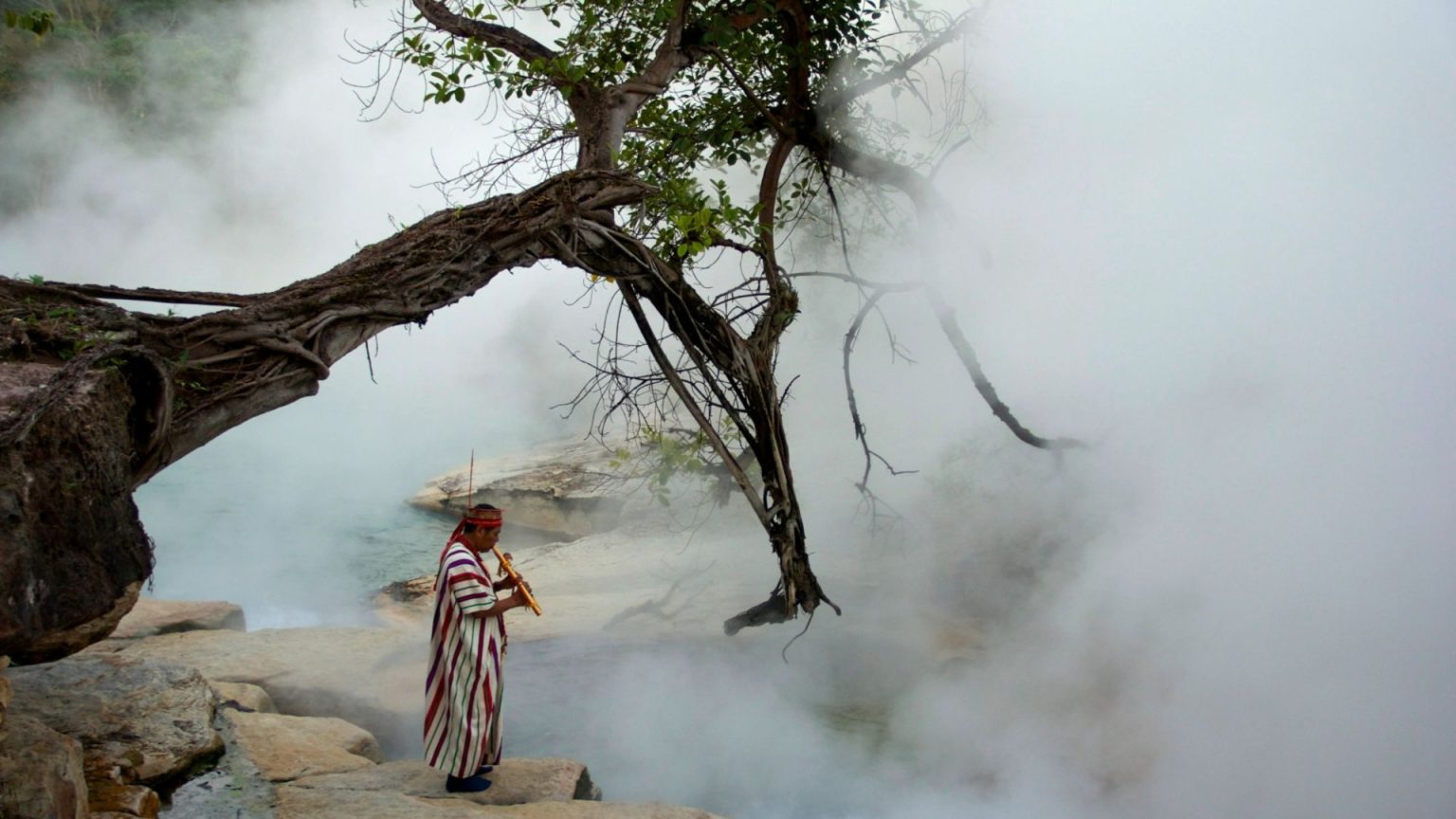The Shanay-Timpishka, more commonly known as the Boiling River of the Amazon, is a geothermal wonder located in the Mayantuyacu region of Peru, nestled between the Andes Mountains and the western fringes of the Amazon rainforest. This river, reaching temperatures as high as 210°F (100°C), poses a lethal threat to any creature that falls into its scalding waters. Animals that accidentally enter the river are effectively cooked alive, their eyes turning a milky white as the heat rapidly denatures their proteins. The intense heat causes their flesh to cook on their bones, leaving them weakened and unable to escape the boiling water, which eventually enters their mouths and cooks them from the inside out. Even a brief dip of a human hand results in second or third-degree burns within seconds. The very air above the river carries the burning heat, scorching the noses and lungs of anyone who dares to breathe near its surface.
The source of the river’s extraordinary heat is not solar radiation, as its indigenous name, “boiled by the heat of the sun,” might suggest. Rather, the river’s scalding temperatures originate from geothermal activity deep within the Earth. Cold rainwater percolates down through fault lines in the Earth’s crust, where it comes into contact with intensely hot rocks heated by the planet’s internal geothermal energy. This superheated water is then forced back up to the surface, creating the Boiling River. The nearest volcanic activity is hundreds of miles away, highlighting the uniqueness of this geological phenomenon.
The existence of the Boiling River has long been part of local folklore, known to the indigenous communities of Santuario Huistin and Mayantuyacu, who regard it as a sacred site. Stories of its lethal waters were also passed down through generations, including accounts from Spanish conquistadors who reportedly encountered a boiling river while pursuing the last Inca emperor. However, for many years, the river remained largely unknown to the outside world, existing more in the realm of myth than scientific reality.
Andrés Ruzo, a Peruvian geothermal scientist and explorer, played a pivotal role in bringing the Boiling River to global attention. Having heard stories of the river since childhood, Ruzo embarked on an expedition in 2011, guided by his aunt, who claimed to have previously swam in a cooler part of the river. Their journey through the dense jungle culminated in the discovery of the legendary river, a sight that deeply impacted Ruzo, blurring the lines between known and unknown, ancient and modern, and scientific and spiritual. He realized that significant natural wonders remained undiscovered, even in the 21st century.
Ruzo’s 2016 TED Talk brought the Boiling River to a wider audience, showcasing its extraordinary nature and highlighting its scientific significance. He detailed his measurements of the river’s extreme temperatures and described the gruesome fate of animals that inadvertently entered its waters. The talk sparked widespread interest and further research into the river’s unique geothermal properties.
The Boiling River is not the only geothermal feature in the area. Two other waterways, the Salt River, a salty thermal stream, and the Hot River, a thermal freshwater stream, also exist nearby. These, along with the Boiling River, represent a unique geothermal system, fueled by the Earth’s internal heat. The region serves as a testament to the powerful forces at play beneath the Earth’s surface and their ability to create extraordinary and sometimes lethal natural phenomena. The Boiling River remains a powerful symbol of the undiscovered wonders that still exist on our planet, challenging our understanding of the natural world and reminding us of the vital importance of exploration and scientific discovery. It serves as a testament to the interconnectedness of geology, hydrology, and biology, offering a unique window into the Earth’s dynamic processes. Furthermore, the river’s sacred status among indigenous communities underscores the complex relationship between humans and the natural world, highlighting the importance of respecting and preserving such unique environments for future generations.


